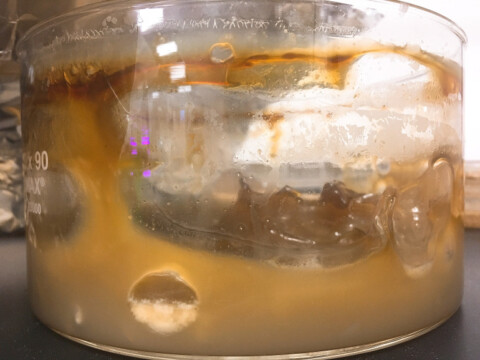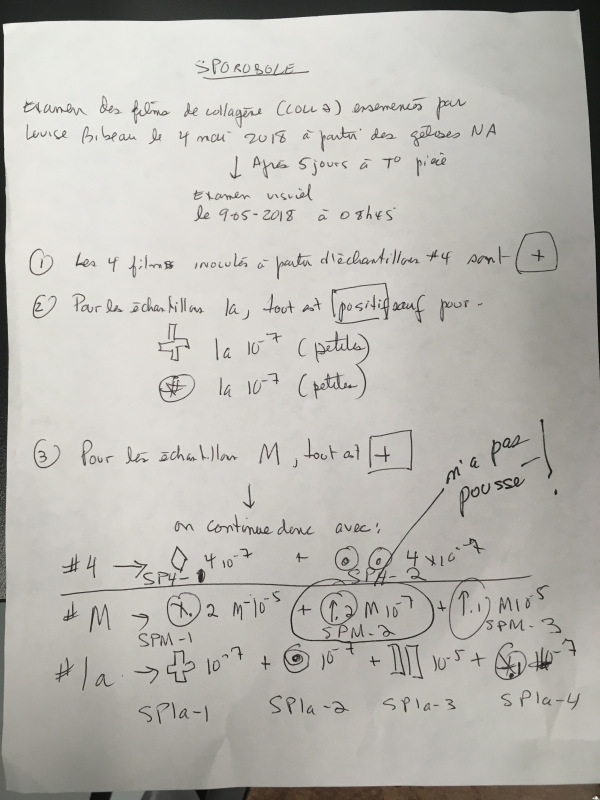THINGS ARE GETTING CEREUS
Weeks of multiple, repeated tests are required to isolate a specific bacterium–for us, for this project, we wanted to isolate the one that produces the enzyme to digest collagen. Our initial experiments showed us that something in our samples was eating away in a somewhat targeted manner at collagen plates we prepared, but we weren’t sure which “bug” was doing it, or if many were. Various and assorted types of microbes are present in a natural culture sample that has been collected, coexisting or competing in their swarming ecosystem. My collaborator, Denis, and his lab technician, Louise, were successful in completing the fine-tuning experiments to isolate our bug, while I was away at another residency in Finland. I arrived back to purified cultures, extracted and frozen into new cell banks for our future work.
Last week, Denis sent the purified cultures away to another lab to identify the particular strain, and got the results this week: Bacillus cereus.
What is interesting, though, is that more than one purified culture from more than one disparate sample were sent away: some from soil collected by the Montreal Waterways group at Concordia University, from a site they labeled as “Biker’s Garden” in St Henri near the site of the old Tannery Village, and one from my own saliva sample that was cultured. The exact same microbe was the actor that was digesting collagen in both the winning soil sample AND in my saliva. Having a “dirty mouth” has never been such an appropriate metaphor.

Our isolated strain is nonpathogenic (Biosafety Level 1), though typically this bacterium produces toxins that can lead to food poisoning, specifically in leftover grains, and particularly in leftover rice. I have, until this very moment, eaten leftover rice as a part of my normal routine, which might explain its presence in my mouth. It is normally found in soil and on foods grown in soil, so I’m not sure what the connection would be to the site it was collected from, other than that it was a garden. The other soil samples collected (from other sites) were not as successful in our collagen-digesting experiments.
Identifying the strain that we are working with provides us with an excellent avenue for acquiring more information about it and manipulating this bacterium to do more of what we want with the collagen. It also assures us that it will be safe for the public presentation of works created with it.
On the theme of bacto-intimacy that we began with, nothing can be more intimate that a relationship between a mouth and something else, but this intimacy is wide, boundary-less and disruptive. Humans have been trained to think of the soil, the earth and “outside” as separate from our inner selves, in terms of our whole microorganism, called a body. These experiments somewhat poetically and perhaps disturbingly show that there is no separation, no dividing line whatsoever, between what is on/in the ground in a massive urban centre and what is just behind our own lips, down through our guts and indeed what becomes part of the whole of what we think we are as individuals.


